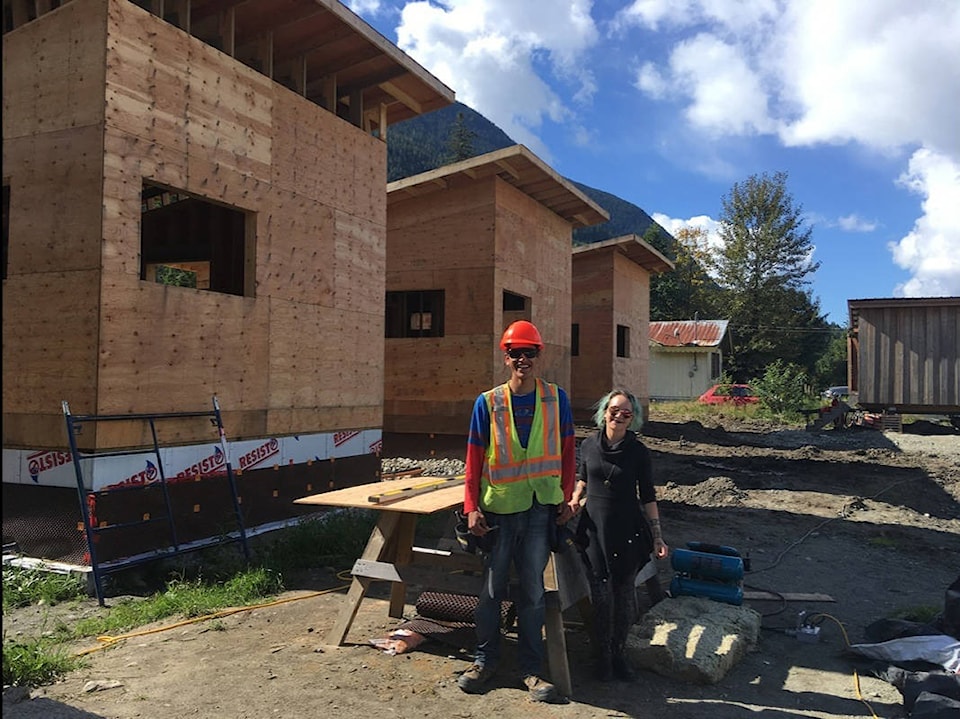By now most of us have heard of the “tiny homes” movement, but few of us may have ever set foot in one. However, that is about to change with the Nuxalk Nation’s ambitious new endeavour: the building of four brand-new “micro-homes” on the townsite reserve.
“It’s a really exciting project,” said Asset Assistant Jalissa Moody, project manager. “One of our goals is to change people’s perspectives on what housing looks like on reserve and broaden that view to include these alternative options.”
A member of the Nation, Moody was born and raised in Bella Coola. She completed an interior design degree at Vancouver Island University before undertaking additional training in sustainable building construction and design in Ontario. This is the first project she is managing in her role with the Nation, and she is clearly passionate about her purpose.
“We are working with Nuxalk Health and Wellness on this project as the units are intended for homeless men in our community,” she explained. “There are a number of homeless and at risk men in the community who have been sleeping in cars and buses, and these units will hopefully be a part of getting them back on their feet.”
The project is following the principles of the “Housing First Initiative,” which has been employed across Canada. This approach provides immediate access to permanent housing, in addition to flexible, community-based services for people who have experienced homelessness.
The approach has reported successful results in cities such as Vancouver, where participants reported that having a permanent home helped them to recover their dignity and reestablish the feeling of being connected to others.
In addition to its unique goals, the micro-homes are also unique in that they are the first “off-grid” and sustainable homes the Nation has built. With the successful launch of the carpentry program, they are also being built by local hands. This combination is producing a product that is designed, built, and eventually will be occupied by members of the Nation.
The units are being built by members of the Nuxalk Carpentry Program, which has attracted approximately 30 - 40 local apprentices who are working under the supervision of a Red Seal carpenter. The units are employing the same building practices used in the new larger homes, such as rain screens, to ensure they withstand the elements of the climate.
They are also economical. Each unit can be built for approximately $50,000 and, barring any major delays, completed within six months. This combination makes them an attractive option in a community strapped for housing.
“The units are 388 square feet and are fully self-contained,” said Moody. “There is a bathroom, bedroom and a kitchen, with shared laundry facilities being housed in a separate unit between the houses.”
The units are built to maximize their source of energy (another first for the Nation): solar power. Each unit will be equipped with approximately 12 solar panels on a slanted, south facing roof. They will be connected to the grid as backup, but Moody is confident the panels will be able to deliver all of their electricity needs.
“We worked with Hakai Energy Solutions to design the solar power system,” she said. “It was great because they have a lot of experience setting up similar systems in remote First Nations communities, and they are able to remotely monitor the system once it’s up and running.”
Moody is hopeful the pilot project will lead to more units being constructed and will ultimately change people’s perspectives about what housing looks like.
“These units are flexible and can be designed to accommodate different types of tenants, such as elders, young people, or smaller families,” she explained. “It’s a new way to meet our housing needs.”
